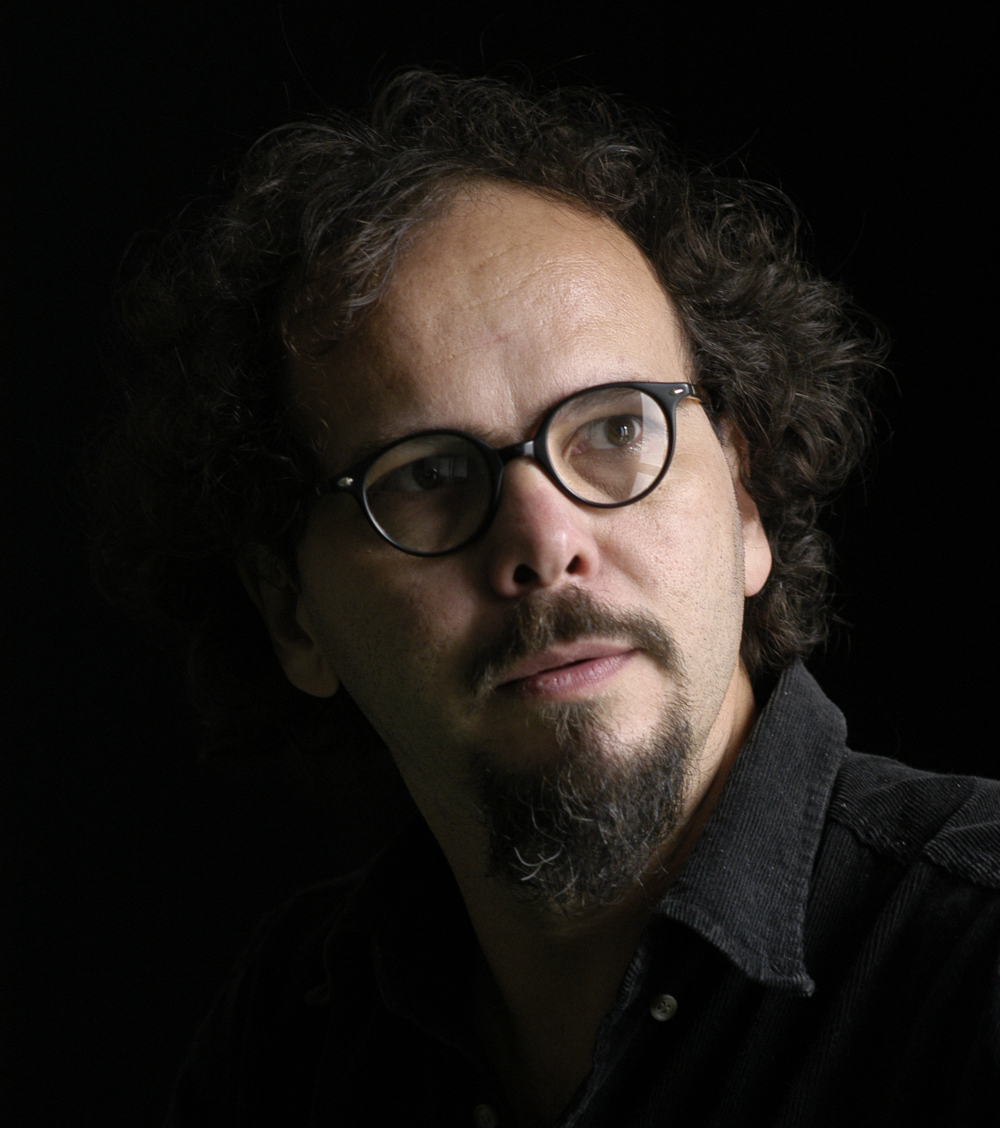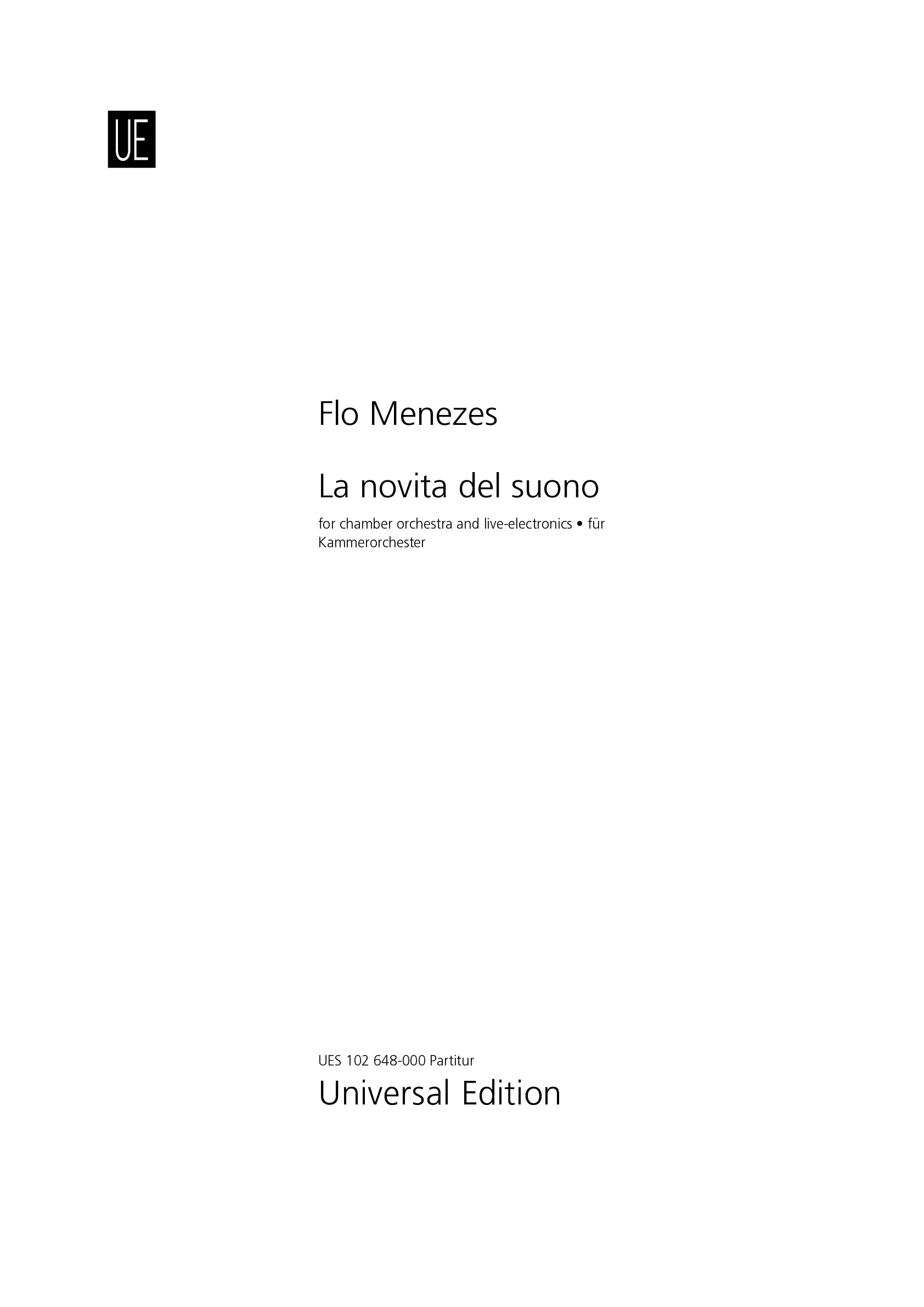

Flo Menezes
La novità del suono
Short instrumentation: 1 1 1 1 - 1 1 1 1, perc, str
Duration: 23'
Instrumentation details:
flute
oboe
clarinet
bassoon
horn
trumpet
trombone
tuba
percussion
violin
viola
violoncello
double bass
La novità del suono
Printed/Digital
Translation, reprints and more

Flo Menezes
La novità del suonoOrchestration: for chamber orchestra and live-electronics
Type: Dirigierpartitur
Sample pages
Video
Work introduction
La novità del suono (The novelty of sound) was written for the EOC – Ensemble Orchestral Contemporain of Lyon, France – in February/March 2006 (revision: August 2006) for chamber orchestra and live-electronics. The title refers to a phrase from Dante Alighieri's La Divina Commedia (Paradiso, Canto I), where the poet discusses the astonishing impression that motivated him to hear the "novelty of sound" in the Paradise. My work was inspired by this image, while revisiting the "traditional" instruments of the orchestra as if it were a first listening, from which some of their sonorities are taken into consideration for spectral developments based on granular synthesis in real time, diffused in quadraphony.
I wrote the work in about 20 days between February and March, 2006, and the following year it was awarded the prestigious Giga-Hertz-Preis, promoted by the ZKM Karlsruhe and the Experimentalstudio des SWR Freiburg, Germany. In this first edition, the award had the illustrious participation of Pierre Boulez in the international jury, as well as Wolfgang Rihm, Horacio Vaggione and others, and the jury was unanimous in giving the award to La novità del suono.
The work is based largely on proportions of the Fibonacci Series and consists of 13 Situations. These Situations lead to musical and theatrical behaviors, and at one point there is a dice game performed by the conductor. This is a tribute to Mozart's Ein musikalisches Würfelspiel K516f, probably one of the first examples of a random composition in the history of music, in this "Mozart year" (2006) when we remembered the 250th anniversary of his birth. La novità del suono is not, however, a "random" or chance work. On the contrary, its entire structure is derived from personal harmonic techniques, which are quite detailed -– cyclic modules and proportional projections – but there are moments of directed improvisation. In these passages, there is a certain freedom of choice on the part of the musicians, although the musical context is quite precise.
The composition is based, from the point of view of harmony, on a Harmonic Entity, which was derived from a chord of Schoenberg (Op. 2, 1) on which I had recently written the conclusion of one of my theoretical texts on harmony in New Music. From a structural analysis of this chord, I constructed another chord, slightly distinct from the first one and still based on my analyses of Schoenberg, and in the end, I had the constitution of two "versions" of this Entity: a non-extended Harmonic Entity (Entité Harmonie non-étendue); and an extended Harmonic Entity (Entité Harmonique étendue). The French terminology is due to the fact that the original score was originally published in French because it was commissioned in France. These two harmonies were recorded beforehand and constitute two sounds that are used for real-time granular synthesis at certain moments of the work.
What is necessary to perform this work?
Google Drive link with downloadable materials (Max/MSP patch) for the performance piece:
https://drive.google.com/drive/folders/1H29ry6u3frbMM7bDjNxj4KYzPiS2a6pI?usp=sharing
